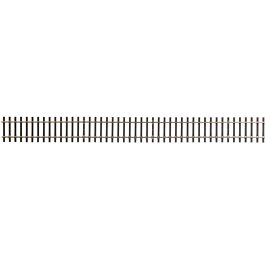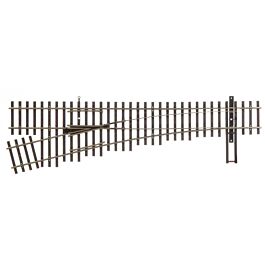Hello all. I’m just getting back into the hobby 30+ years after disassembling my last layout. I’m planning a new layout based on late 1800s/early 1900s logging operations in north central Pennsylvania. HO scale, DCC control. So far I’ve built a roughly 12’ x 21’ room in my basement, designed my layout and bench work and joined a local model railroad club to help learn about all the changes to my hobby since my last go around. Now the construction can begin. Since this is a logging railroad, I really don’t want to use code 100 track and would rather not use code 83 since loggers typically laid light rail. My concern is whether code 70 flex track and turnouts will be more prone to derailments than say, 83. My locos will all be small (sheas, climaxes, heislers, 4-4-0s, & ten wheelers with short cars and short trains. This will be an Allegheny Mountain railroad with appropriate grades. I do have room for generous curves and turnouts. Any comments on the use of code 70 vs. heavier rail regarding derailment problems will be appreciated. Thanks
You are using an out of date browser. It may not display this or other websites correctly.
You should upgrade or use an alternative browser.
You should upgrade or use an alternative browser.
Old model railroader - new model railroad
- Thread starter PatrickO
- Start date
RhB Michael
RhB Lokführer
As long as the wheel flanges aren't too big for that code it should be fine. I would check first. I have some code 75 mixed with 83 on an HOm portion of my layout and the code 75 has not given me any trouble, but these locomotives were designed to run on a shorter code and the flanges are slightly smaller than the average HO wheel.
Laying track in a short code is going to require good attention to detail with no high or low spots, especially differences between rails and perfect joints.
Laying track in a short code is going to require good attention to detail with no high or low spots, especially differences between rails and perfect joints.
Thanks NorthBrit. I do have room for 30”+ radius curves in most areas, and especially where track will be hidden. I’ve also found some great info on how to bend and join flex track without kinks in the joints.Hi Patrick. Welcome on board.
I cannot help regarding track code, but I do say have the curves as generous as possible.. Less chance of derailments imo and looks more realistic.
NorthTexasRailroad
Well-Known Member
Welcome to the forums Patrick! Glad you're on board. You'll find some helpful and experienced folks here.
Iron Horseman
Well-Known Member
Before I read to the end, I was thinking to say since it is a logging road go with code 55. Derailment problems are generally not related to track size but rather the quality of the laid rail, and quality of the trucks and wheels rolling over it. I imagine it will be more difficult to lay good track in the smaller gauges, mostly related to vertical bumps and humps. On the other hand having room for large curves will help make smoother rail. The only time I've noticed a rail code issue is trying to run the old AHM deep flange rolling stock on smaller code track.Since this is a logging railroad, I really don’t want to use code 100 track and would rather not use code 83 since loggers typically laid light rail. My concern is whether code 70 flex track and turnouts will be more prone to derailments than say, 83. My locos will all be small (sheas, climaxes, heislers, 4-4-0s, & ten wheelers with short cars and short trains. This will be an Allegheny Mountain railroad with appropriate grades. I do have room for generous curves and turnouts. Any comments on the use of code 70 vs. heavier rail regarding derailment problems will be appreciated. Thanks
Last edited:
If you are using current production DCC engines and rolling stock you will no problem with code 70. Walthers just came out with a code 70 line including dcc ready switches.

 www.walthers.com
www.walthers.com

 www.walthers.com
www.walthers.com
If you are using older rolling stock you may need to either change the wheels or just swap out the trucks for some of the Kadee sprung arch bars.

Code 70 Nickel Silver Flex Track with Wood Ties -- Each Section: 36" 91.4cm pkg(5)
Track is the most important model on your HO Scale layout, and WalthersTrack makes it easy to create realistic mainlines, sidings and more with Code 70 rail! Combining great looks and great performance in a complete system, each item comes fully assembled and features: Matches 100-pound rail...

Code 70 Nickel Silver DCC Friendly Number 4 Turnout -- Left Hand
Track is the most important model on your HO Scale layout, and WalthersTrack makes it easy to create realistic mainlines, sidings and more with Code 70 rail! Combining great looks and great performance in a complete system, each item comes fully assembled and features: Matches 100-pound rail...
If you are using older rolling stock you may need to either change the wheels or just swap out the trucks for some of the Kadee sprung arch bars.

